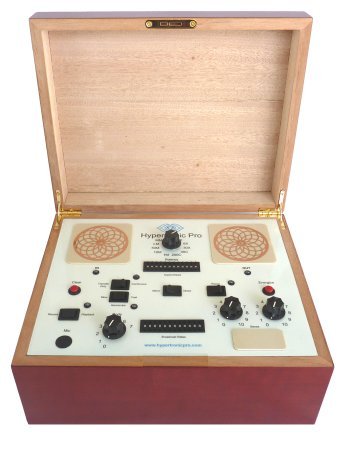History and Evolution of Modern Radionics
What is Radionics?
Radionics is a system of alternative medicine based on the supposition that detectable electromagnetic radiation emitted by living matter can be interpreted diagnostically and transmitted in some cases to treat illness at a distance by complex electrical instruments.
Radionics is concerned with the context of control fields and subtle energies. The term subtle energies refers in this context to those forms of energy which cannot presently be objectively (physically) measured, because they are signals of very low amplitude which are masked due to the component “noise” of electrical equipment).
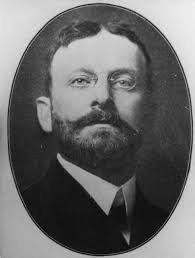 In the course of time, however, various subjective methods have been developed, such as radiesthesia, kinesiology, RAC, electro-acupuncture etc, by means of which it is possible to perform reproducible measurements in this context.
In the course of time, however, various subjective methods have been developed, such as radiesthesia, kinesiology, RAC, electro-acupuncture etc, by means of which it is possible to perform reproducible measurements in this context.The Evolution of Radionics
Principles of Radionics
The principles of present-day radionics were laid down by the American doctor, Dr Albert Abrams (1863-1924).
In the context of his work into differentiation between various symptoms by means of an automatic reflex movement of the stomach of a patient detected by percussion. He discovered an empirically defined arrangement of variable resistances (potentiometer).
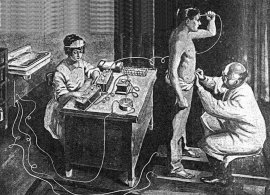 In this context, the patient was connected via a forehead electrode to the “input” of a variable resistance box. At the “output”, a healthy person was connected, also via a forehead electrode (Test person). On the abdomen of the test person, it was now possible to diagnose the pathology of the patient on the basis of settings of the decade resistance by means of the special knock reflex. He named this instrument the Reflexophone (see illustration to the left).
In this context, the patient was connected via a forehead electrode to the “input” of a variable resistance box. At the “output”, a healthy person was connected, also via a forehead electrode (Test person). On the abdomen of the test person, it was now possible to diagnose the pathology of the patient on the basis of settings of the decade resistance by means of the special knock reflex. He named this instrument the Reflexophone (see illustration to the left).It was not until later that Abrams found that it was not even necessary for the patient himself to be present. It was adequate for him to be replaced by a blood sample (as a “specimen” or “proof”). This specimen was poured into a metal cup which (in place of the patient) was connected to the “Input” of the variable resistance box.
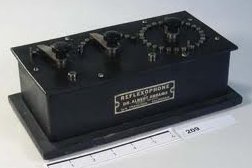 Attribution of resistance values to organs and symptoms
Attribution of resistance values to organs and symptomsFor example, with this layout, Abrams discovered that cancer can be measured at 50 Ohms, gonorrhea at 52 Ohms etc. If the blood specimen of a cancer sufferer was poured into the metal cup and the variable resistance box set to 50, on the abdomen of the test person a positive reflex would be obtained. If on the other hand for the same patient specimen a setting of 52 (gonorrhea) was set on the variable resistance box, this positive reflex disappeared (provided that the patient was not also suffering from gonorrhea). Thus, Abrams developed a series of lists on which organs, symptoms, viruses, bacteria, etc. were allocated to empirically determined resistance values.
With this rate and the variable resistance box, it was thus possible to diagnose a patient on the basis of his blood specimen and to reach conclusions as to the conditions of his organs etc.
The first medicine testing
Abrams also found out that this layout made it possible to examine the effect of medicines, particularly homoeopathy. He poured into the cup containing the patient specimen a corresponding medicine. If this medicine helped the patient with his condition, then the positive reflex on the abdomen of the test person would disappear.
If, for example, the specimen of a malaria patient was poured into the cup and the corresponding value for malaria had been set on the variable resistance box, on the abdomen of the test person a positive reflex would be obtained. If a medicine to cure malaria, such as Quinine, was combined with the patient specimen in the cup, then the positive reflex would disappear, i.e. quinine would help this patient to combat malaria.
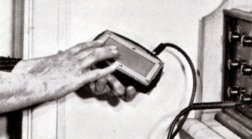 The Stick Pad Detector
The Stick Pad DetectorAbrams always required one healthy person to be prepared for his diagnosis, whom he could connect to his apparatus and on whose abdomen he would obtain the corresponding percussion reflex. Since the test person
- had to be predominantly healthy and
- had to be paid,
the idea of substituting the abdomen of the test person with a latex membrane was arrived at. It was a success! Instead of a percussion reflex, a stick effect on the latex surface (“Stick Pad”) was obtained. In the course of time, experiments were performed with various materials for the Stick Pad. Nowadays, we use acrylic in Radionics equipment.
From electrical resistance to rate
For Abrams and his colleagues, these discoveries could be explained as phenomena of electrically-measurable radiation. Abrams set out his explanation of these phenomena in his “ERA” (Electronic Reaction of Abrams). According to “ERA” an imbalance of electrons in the cellular atoms is the cause of all disease.
The term Radionics was then invented by students of Abrams, by combining the two words radiation and electronics. This implies that in radionics it is possible to measure a fine radiation with electronic instruments designed specifically for the purpose.
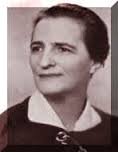 Abrams’ student, Ruth Drown was the first to define the radionic instrument as a modulator of the life force. She produced the concept of harmonising the de-tuned life force using the radionic instrument (see Hahnemann’s Homoeopathy). For that reason, her process is also called the Homo Vibra Ray which implies that it is a human vibration radiation.
Abrams’ student, Ruth Drown was the first to define the radionic instrument as a modulator of the life force. She produced the concept of harmonising the de-tuned life force using the radionic instrument (see Hahnemann’s Homoeopathy). For that reason, her process is also called the Homo Vibra Ray which implies that it is a human vibration radiation.Using this fundamentally different interpretation, Drown abandoned the customary unit employed by Abrams for electrical resistance, ohms, after the numerical values, and thereafter called them rates. Cancer was now referred to not as 50 Ohm but rate 50. Thus it became clear for the first time that in this connection we were concerned with a phenomenon which can no longer be explained by mechanistic physics as employed to date.
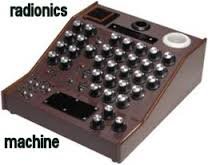 Radionic Broadcasting
Radionic BroadcastingRuth Drown was the first person to use the radionic instrument not only for diagnosis but also for therapy. She discovered that this therapy also operated over distance, if a blood specimen of the patient was laid on the instrument. Her explanation of this phenomenon was that the rates exert a background presence in the “atmosphere” and can be received by a person. The setting of a “rate” on the instrument would set up a resonance in relation to this rate between the instrument and the patient, and thus increase the person’s “receptivity effect”. She named this process “Broadcasting”, a reference to the radio technology which was emerging at that time.

